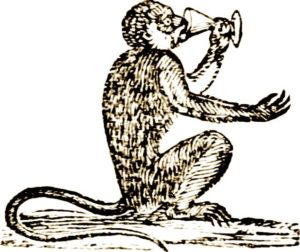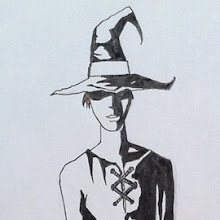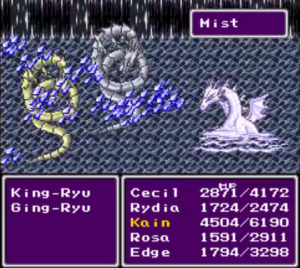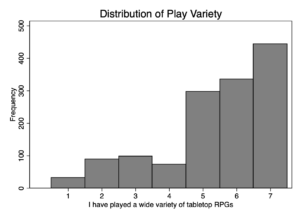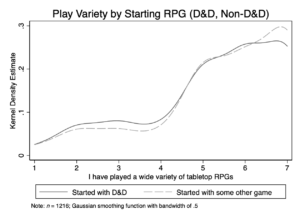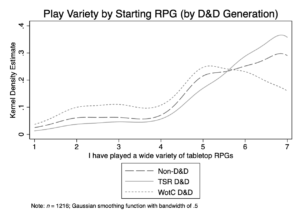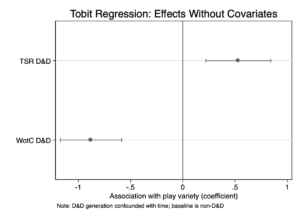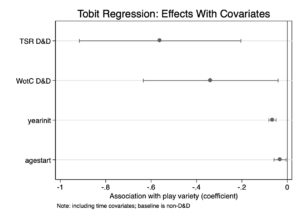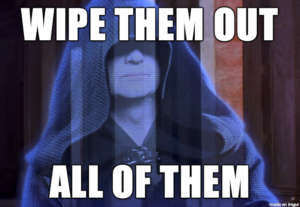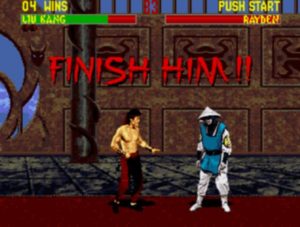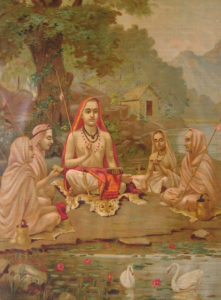
Recently I was thinking to myself: people have written some words about tabletop RPG theory (understatement of the decade). This work is often “empirical” in the loose sense that theorists base conclusions on observing their own play experiences and the experiences of others (often second-hand) but it is not empirical in the sense that a social scientist would generally use that term. And so I was thinking, I have some quantitative data about player preferences, would it be possible to see whether this data could substantiate some of these claims using quantitative methods, or perhaps suggest alternatives based on something beyond anecdote? Specifically, I was thinking about that venerable Forge concept “creative agenda” and the various creative agenda modes proposed as incompatible: gamism, narrativism, and simulationism. These four concepts belong to a broader collection of ideas called the big model, though the GNS subcomponent has had the largest impact on general thinking about RPGs, of the big model concepts.
Before exploring creative agendas in data about player preferences, I had to make sure that I understood the concepts, beyond surface associations. This means taking the theorists seriously, and accepting definitions, even (perhaps especially) when the naming seems counterintuitive or disconnected from the lay understanding of terms. It is unproductive to approach the theory of electromagnetism with the stubborn idea that a field is properly only an expanse of ground covered by grass, flowers, and so forth. Ideally, jargon will involve some congruence between intuitive and technical meanings, but that is perhaps unrealistic to expect in all cases. Sometimes it is best to just use the imperfect, established term, and move on with your life.
After several conversations with people who have engaged heavily with these concepts and find parts of the big model personally useful, I have come to believe that I (and probably many people outside of the Forge and story games diasporas) misunderstand both the specific terms and the broader goal of this collection of ideas. Rather than explanation, I think the purpose of big model thinking generally, and the more specific ideas around creative agenda, is to present particular ideals of possible game practice. This is in many ways closer to a therapeutic framework in counseling psychology, such as psychoanalysis, person-centered therapy, CBT, or DBT. Therapeutic frameworks generally involve a greater focus on particular interventions and some alignment with evidence based practice compared to the big model, but once you understand the theory like this, the way people use and discuss it makes a lot more sense, at least to me.

To be (somewhat) more concrete: the big model theorist looks at a collection of play goals aligned in some way, such as learning and challenge (“gamism”) and wonders whether purifying a play experience around only these play goals might be uniquely satisfying for the collective experience of a group of players. Similarly for other modes. This is what the big model means by coherent play. Whether this matches any particular experience is almost beside the point, much like the way a three-minute sprint mile is an ideal that has never been reached for the sprinter (though obviously the activity of sprinting is far simpler than tabletop roleplaying).
So what about the player preferences data? Based on this understanding, it would be a poor fit for big model concepts, even accepting that measurement at the individual level could approximate a group-level analysis consistent with big model claims. People will have to think a lot harder about ways to measure big model concepts before that will become possible, and from what I can tell there has been little enthusiasm for that kind of work to date. The data I have still has potential to reveal connections between what players enjoy during play and what players find useful in games, which I may explore in a future post.
Some simple takeaways for outsiders when trying to make sense of big model ideas: substitute “play goal” (or perhaps “ultimate play goal”) whenever you see the words creative agenda, and realize that the point of the theory is presenting possible ideals, rather than explanation. You may lose some nuance, particularly involving individual versus collective experience, but that is probably closer to the intended meaning than running with intuitive associations.

